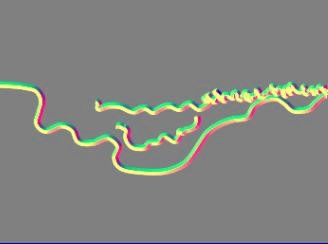



 |
 |
 |
 |
 Original Splines / Initial Conditions, frame 200 |
 Velocity Field, frame 200. Red is the X velocity, green is the Y velocity. Middle gray means zero velocity. |
 Finished 2D Aurora / Advected Fluid, frame 200 Green corresponds to incoming electron density. |
 Original Splines / Initial Conditions, frame 201 |
 Velocity Field, frame 201 |
 Finished 2D Aurora / Advected Fluid, frame 201 |